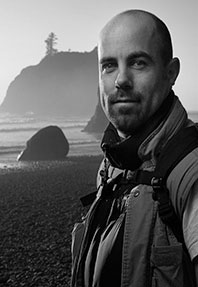Excitement always comes over me when I hear snow will be coming my way. For me there is something magical about winter that is hard to describe in words and only can be summed up in an image. The single most challenge to winter photography has to be the preparation. Not having the right essentials can lead to life-threating situations. Learning these lessons can really go a long ways to having fun while out in the snow as well as your safety. The following article is a list of the top ten things I have learned to prepare for winter photography.
Top Ten Things To Prepare For Winter Photography
1) Learn to read and understand snow reports. There are many reasons for this but the most important is to avoid avalanches while out in the backcountry. Avalanches are always imminent after a sizeable amount of snow falling on frozen snow. The frozen snow below acts as a buffer and escalates chances of avalanches.
2) Make sure to try all equipment beforehand to make sure it fits. Nothing is worse then when you are stuck in the snow and the equipment doesn’t fit or will not work. Lets admit sometimes we put on a lot of weight and we are not the same anymore. If you are like me and your weight yo-yo’s do yourself the favor of trying everything on the day before. This is especially true for the first outing of the season.
3) Be honest with yourself about your physical condition and what you are capable of. It’s easy to get carried away with the getting to a certain destination without planning on getting back. Exercise in the snow is a whole new ball game and what you might be capable of on dry land is a different story for snow. The fact is making your way through snow is not as easy as it looks; your body will use different muscles then it is use to and before you know it you are hurting in areas you did not know even existed.
4) This is common sense and partly goes with the above point but make sure to stretch before and after for a period for ten to fifteen minutes to really warm up the muscles and avoid any cramps.
5) Bring a friend if you can and always tell me people where you are going to be and when they can expect you back. Travelling during the winter in the backcountry can be exciting but it also can be very dangerous. Many of us are impatient to get out there to photograph but it is worth it to wait for a buddy to come.
6) Research the areas you are going to see if there are any snowshoe routes laid down or where you might go in case of an emergency. Books that are great for us in the Pacific Northwest are snowshoe routes of Washington and Oregon that specifically lay out the best routes to go, when, and far they are. It also prepares you for what is ahead and what you can expect in terms of physical exercise. When starting out or a lack of knowledge about the backcountry the best plans are to stick to the routes or tracks that have already been laid out. This way if you notify someone of the area and route it makes emergency services reaching you a lot more possible.
7) Make sure to prepare camera equipment for winter. For some people this might seem foreign but the winter weather can really take a toll on your camera and cease the camera from working; I would sure hate to hike all the way in the snow to find out my camera was not working. So what can you do to prepare for this; bring a couple extra batteries, leave a set of batteries in your pocket that stay warm, bring a Ziploc bag to prevent condensation in the camera when taking it from hot to cold environments or vice versa. Another thing to be aware of is the tripod and protecting your hands from colder temperatures; these temperatures can cause your hand to stick to the tripod along the metal outer parts if not insulated. Lastly, bring snow baskets for your tripod to avoid your tripod sinking into the snow.
8) Allow more time that you think to plan for your route; especially if you are trying to make it somewhere for sunrise or sunset. Preparing to photograph in winter takes a lot more time then in other seasons so factor this in to your allotted time.
9) Dress in layers! When exercising in the snow all the clothing one wears can become awfully hot fast causing a lot of sweat that later turns to cold dampness when idle and photographing. It is important that you can shed layers easily and quickly when needed during the physical portion of winter photography. I also look for clothes that are dry-wick and light; I want to have these clothes easily accessible when taking them off and on.
10) Have fun with the outing and don’t get to dependent on getting to the destination but enjoy the journey!

Website: www.kevinmcnealphotography.com
Facebook: https://www.facebook.com/kevinmcneal30
Instagram: www.instagram.com/kevinmcneal30
Flickr: https://www.flickr.com/photos/kevinmcneal
Kevin McNeal is a landscape photographer who resides in the Pacific Northwest of the U.S. He focuses on grand colorful landscapes that reflect the most unique places on earth. Capturing moments of magic light and transferring this on print, images behold a combination of perseverance, patience, and dedication to capture the images in ways unseen before. The stories of how these images are rendered come across in the feelings the images convey.






Recent Comments